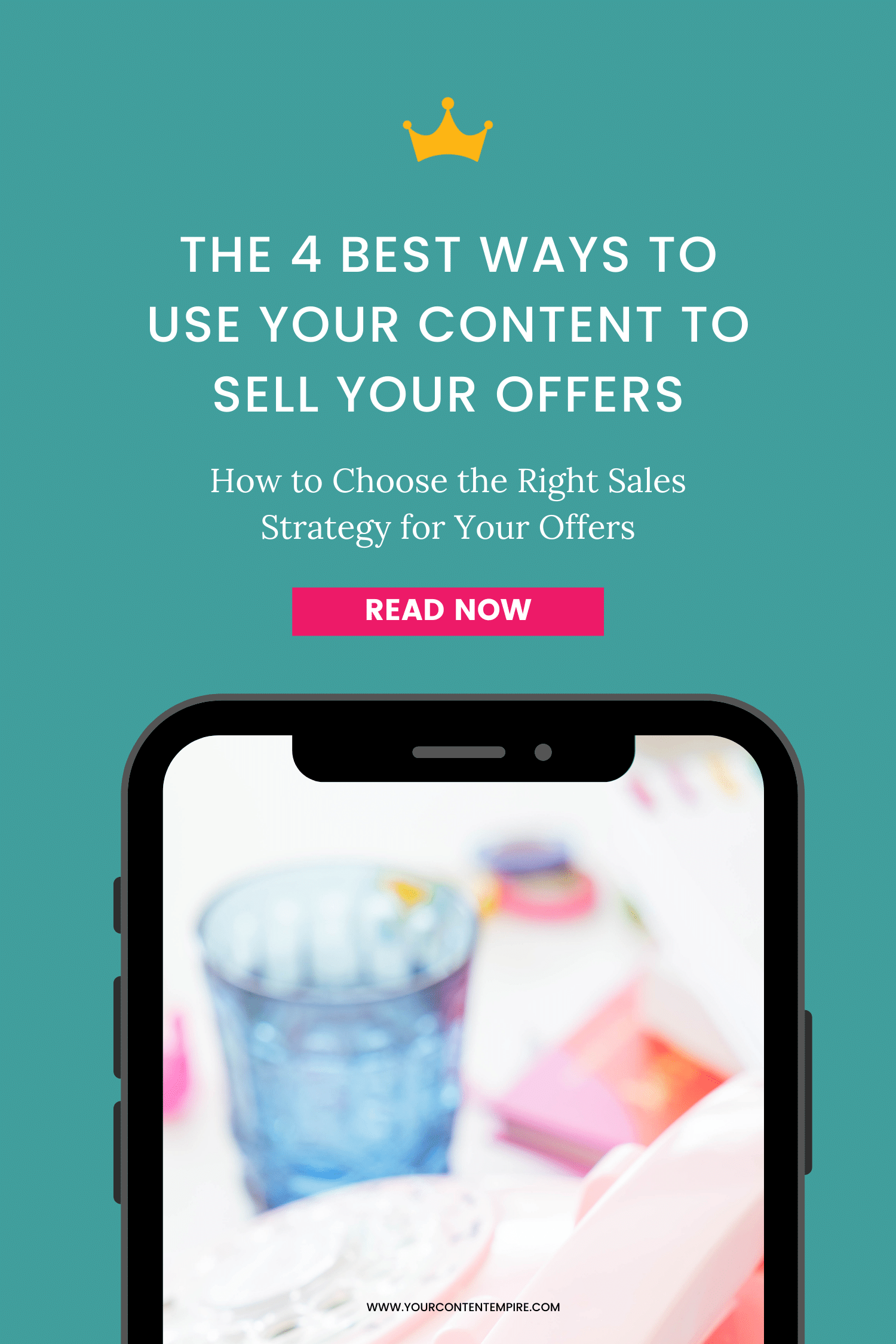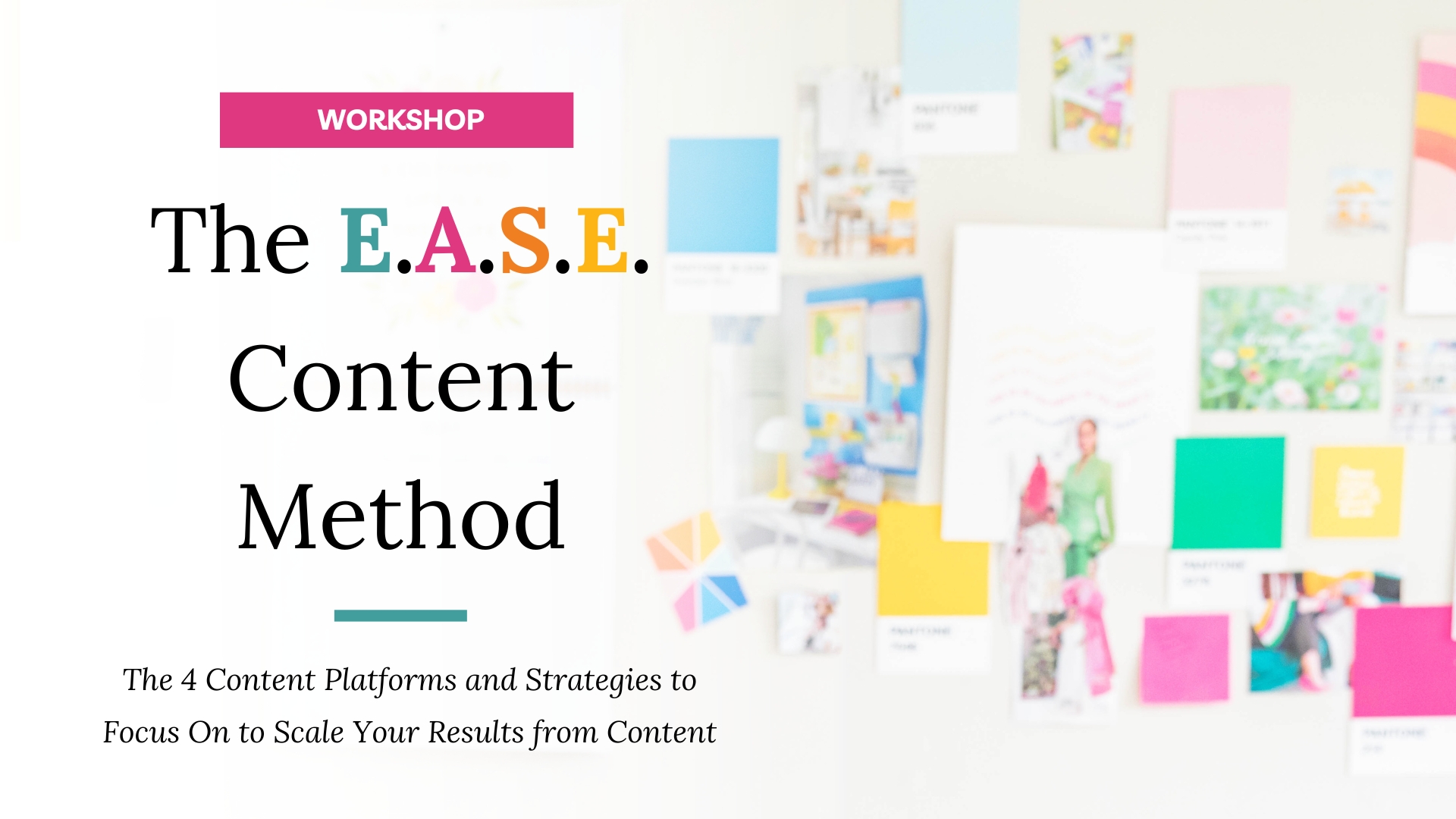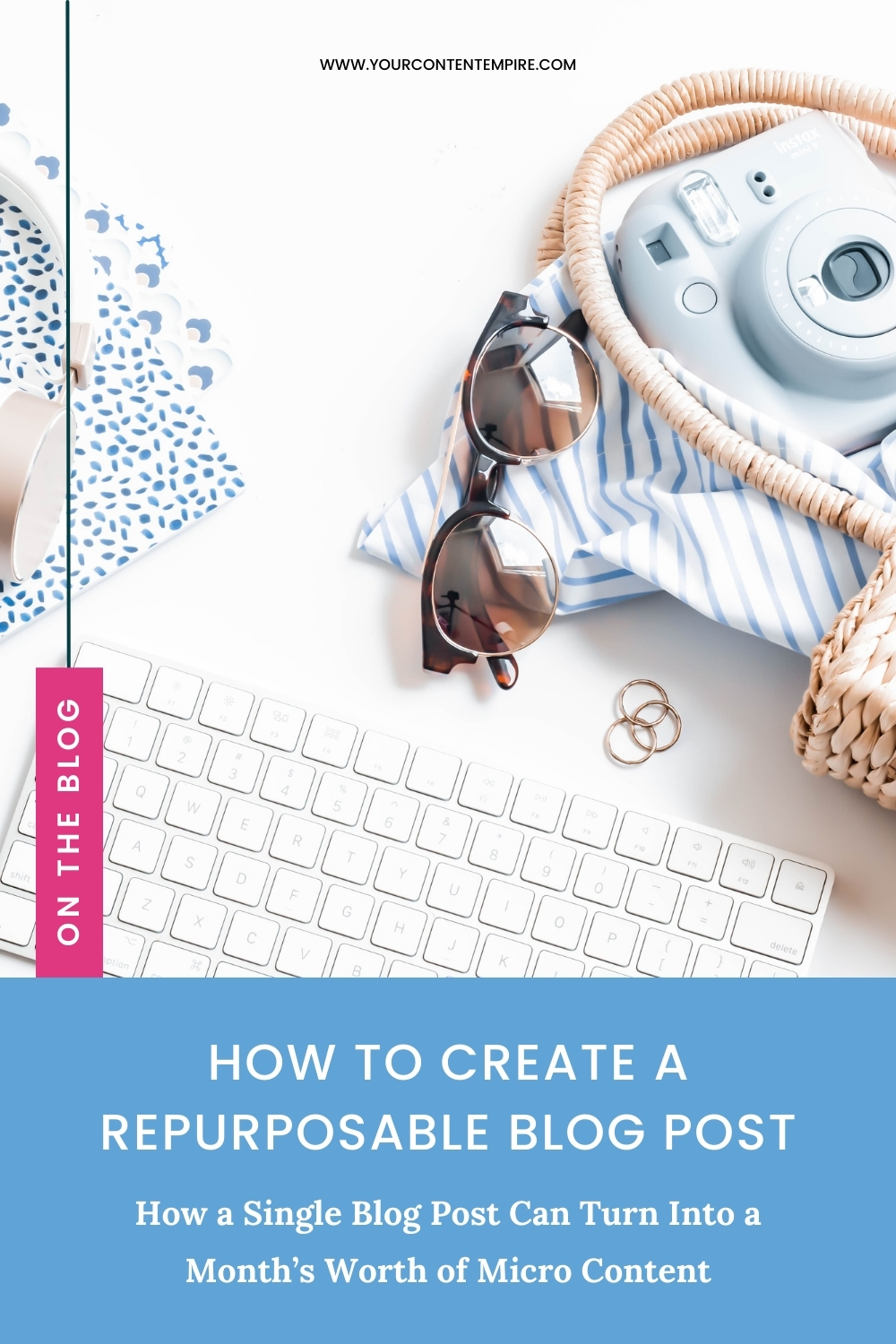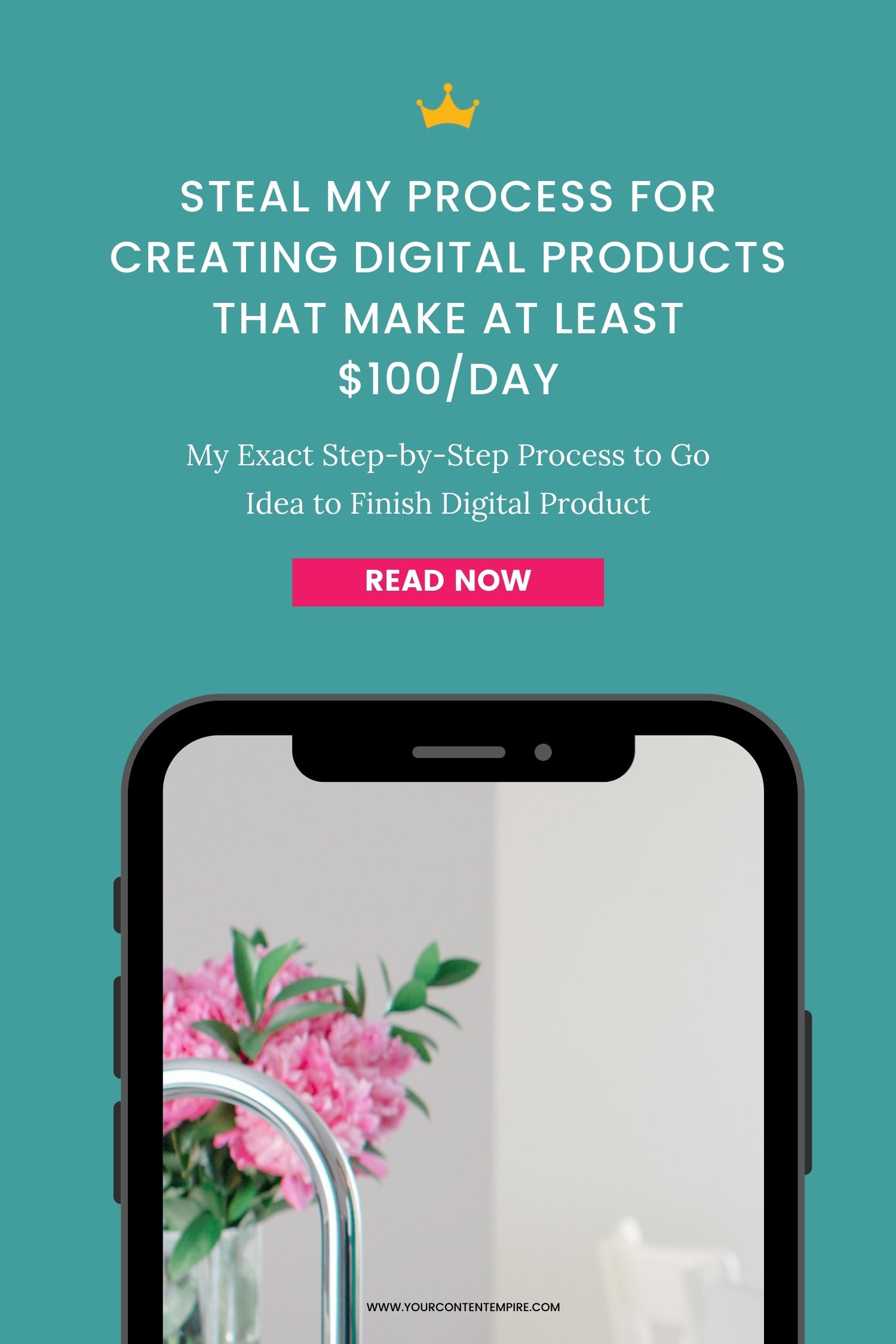Over the past couple of weeks, we’ve been exploring the E.A.S.E. Content Strategy Method.
So just to recap, the E.A.S.E. Content Strategy Method is a powerful approach to your content strategy that both simplifies the number of platforms you're focused on while also diversifying those content types to ensure you’re focused on each of the four core content purposes: expertise-establishing, selling, engaging and attracting.
Your expertise content is the content you use to establish yourself as an expert, as well as establish your website as a hotspot for information on your area of expertise (click here to read more about your educate content)
Your attraction content is the content you use to build and grow your audience and get in front of new people (click here to read more about your attract content)
Your selling content is the content you use to move your audience to a point of sale and close the deal for your paid offer(s).
Your engagement content is the content you use to build and nurture relationships with the people already in your community.
Where Does Selling Fit In?
You hear a lot of people in the online business industry, especially female entrepreneurs, express that they're not entirely comfortable with selling.
And I find that really interesting because without selling, you don't really have a business.
After all, what is the business if not the ability to exchange value for money?
Admittedly, there are some really sleazy sales techniques out there and I'm wholeheartedly advising that you avoid them – because they’re definitely not necessary.
But I think that sales is really about generosity in your business and helping people get to the products and services of yours that they need. If sales is something you feel iffy about, click here to read this post pronto!
Now, as far as the E.A.S.E. Content Strategy Method comes in, your selling content is what you use to move people to the point of sale and then close that deal.
How to Choose Your ‘Sell’ Strategy
I recommend choosing ONE specific sales strategy to focus on per month. So every month you should be making an intentional decision of both what promotion you're going to focus on and how you're going to sell it.
So for me, this might look like spending one month developing a new sales funnel.
It might mean the next month running a short email sales campaign.
Another month I might be focused on personal outreach and building up my referral network.
Or I might spend the month really nailing my retargeting ad strategy.
The key is that I don't generally go all-in on every single one of these at the same time (even though if I’ve set something up in an earlier, it’ll continue to work in the background).
In this blog post, we're going to be getting into some of the ways that you can sell with your content.
But first, we need to make a clear decision of where your point of sale is for your offers because it has a major impact on what strategy you should choose.
Where do people purchase your offer?
Do they need to talk to you on a call first? Your point of sale is likely a sales call.
Do they need to go to a sales page to learn more and purchase?
Do they come into a store to purchase?
Do they come to your online shop to browse?
I would start by making a list of all of the offers that you sell in your business, their price points and how people purchase them.
Here are some examples from my own business:
For my sales funnel agency package, the point of sale is a consultation call where we can discuss their specific goals, unique offers, and strategies for selling them.
For my signature program (Your Content, Your Empire), the point of sale is generally a webinar or a challenge, leading to a sales page.
For my small digital product, the 2020 Content Empire Planner, the point of sale is my thank you page or a button to the sales page on my shop page.
Selling Strategy #1 – Email Marketing
Email Marketing is the most profitable and effective selling strategy that you can have in place for your business. Now, that doesn't mean that you shouldn't experiment with other types, but email marketing should be one of the primary focuses for this part of your E.A.S.E. Content Strategy Method.
According to HubSpot, more than 59% of marketers say email is their biggest source of ROI.
What this actually looks like in your business is either evergreen and automated or a live campaign style.
I would start by making sure that you have a strong evergreen sales funnel in place for the core offer in your business.
And if you feel weird about the word sales funnel, remember it's just another way of referring to the intentional sales journey that you're crafting for your offer and the people who genuinely need it.
Then once you've built your sales funnel and have tested and optimized it so it sells consistently, you can move into shorter campaigns, like a live launch or a short email marketing campaign to your existing audience.
Selling Strategy #2 – Retargeting
Retargeting is another sales strategy that you can use as part of your E.A.S.E. Content Strategy Method. Think of it as a way of getting your offer in front of your people in a different way than just relying on email.
People are getting more emails than ever before, and so it's getting tougher and tougher to stick out in somebody's inbox. By using and incorporating retargeting ads, you're going to be able to get their attention on a different platform as well as email.
This is a paid technique and it does require that you have an audience to retarget so even if you are not ready yet, make sure to install the pixels on your website so that you can start building up that audience to retarget when you are ready.
One of the strategies that I use with my funnel building clients is using a retargeting ad once a month for one week to increase leads and inquiries. It's a great way to start to dip your toe into paid ads and retargeting even if you're starting with a bit of a smaller audience. And those once a month retargeting week-long ads are kind of like just scooping up the audience that you've collected throughout the past month and grab their attention differently.
Selling Strategy #3 – Personal Outreach
Fortune truly is in the follow-up and sometimes adding a bit of a personal touch through personal outreach can be a great way of standing out and closing the sale – especially in a world that is obsessed with automation, personal outreach stands out in a big way.
One of the ways you can use this is by direct messaging or emailing anyone from the past month who's asked you a question about your area of expertise directly (through email or in person) or on social media (like in a Facebook group or on Instagram). Tell them you were wondering if they had any other questions that you could help with.
Another strategy is to make sure that you are following up regularly with any of your inquiries or any of the proposals that you’ve sent out.
Another of my favourite techniques is to use your email service provider to set up tags that let you know when somebody has been clicking onto your sales page multiple times. Then you can reach out to them personally to see if they have any questions.
One of the things I did in the last Your Content, Your Empire launch is sent a personalized video message through BombBomb to anyone who’d visited the sales page three or more times but hadn’t signed up yet. It was a great way of connecting with people that I could see were interested in it and put a name to a face and give them a personal invitation to invite them into the program.
Selling Strategy #4 – Referrals
Another top strategy to focus on as part of your EASE framework is setting up your referral network.
A Nielsen study found that 80% of people seek recommendations before buying anything.
Start by auditing your networking, biz friends, past and current clients to see if there’s opportunities to ask them to refer other people or to set up a referral circle with them.
With past clients or current clients: Plant the seed that you’d love to get referrals from them. It might mean putting in some kind of incentive or reward for them for sending you referrals. If that person books, maybe it's additional time, a small bonus services or product.
For your programs and courses: You could set up a formal affiliate program that gives them a percentage of the sale for sharing it through their unique referral link.
With complementary business owners: Seek out business owners who offer complimentary offers and see if they would be willing to send referrals back and forth, meaning that you would send them referrals and they would send you referrals.
Want to Learn to Put This Strategy Into Action?
Get instant access to my E.A.S.E. Content Strategy Workshop where you'll learn the 4 content platforms and strategies to focus on to scale your results and sales from content. Plus you'll get my exclusive EASE Content Planning Spreadsheet for FREE ↓







